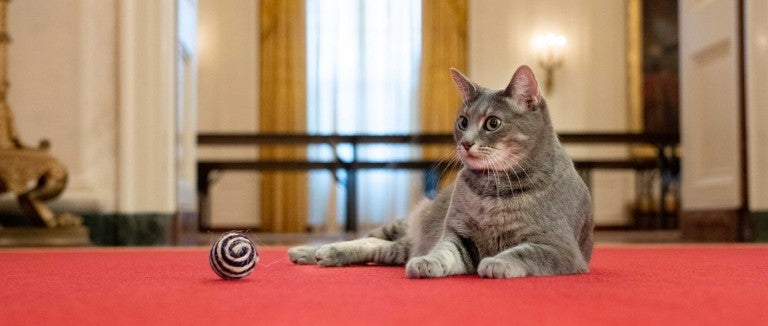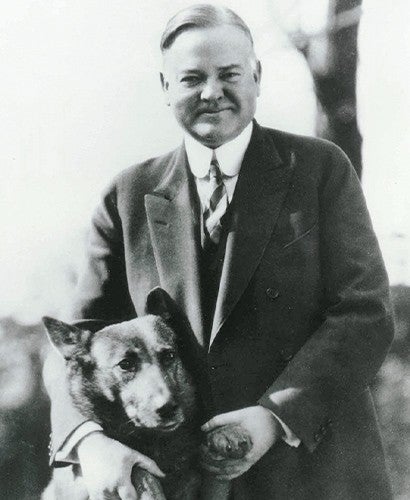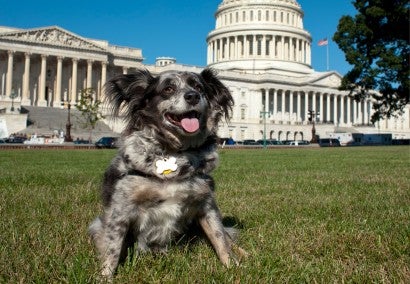It’s March 2021, and then-White House press secretary Jen Psaki is holding a press conference. Newly elected President Joe Biden has been in office for less than two months, and the hard-charging White House press corps, always on the lookout for broken political promises, wants answers about the pressing issues of the day.
“We were promised a cat,” one reporter says to Psaki. “What happened to that?”
Psaki throws up her hands in what appears to be mock exasperation.
“I don’t have any update on the cat,” she replies. “We know the cat will break the internet.”
Well, not quite. Though the Bidens’ long-awaited new cat, Willow (shown above), certainly attracted a lot of attention when she finally arrived at the White House in January 2022, the internet withstood the crunch. But Psaki got one thing right: Presidential pets have long captivated the public’s attention.
From Calvin Coolidge’s raccoon, Rebecca, and William Taft’s cow, Pauline Wayne, to Franklin Roosevelt’s Scottish terrier, Fala, and Barack Obama’s Portuguese water dogs, Bo and Sunny, many White House animals have achieved celebrity status.
Take Pauline Wayne, a handsome black-and-white Holstein. Cows grazed the grass on the White House grounds as late as the early 1900s, supplying first families with milk and butter when there were no dairy companies in Washington, D.C. But Pauline “was adored beyond her role as a dairy source,” notes the White House Historical Association. When she went missing for two days in 1911 while being transported by train to a dairy exposition in Milwaukee, the newspapers provided breathless coverage.
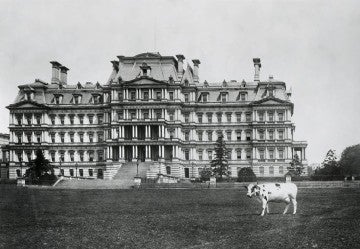
Rebecca the raccoon was gifted to Coolidge by a Mississippi man in November 1926, with the idea that the first family would cook the animal for Thanksgiving dinner. The president and first lady Grace Coolidge decided to make her a pet instead. She spent time inside the White House, where she enjoyed playing in the bathtub with a bar of soap, and on the grounds in a house built for her.
Rebecca attended social events with the first lady, vacationed with the first family and made an appearance at the 1927 White House Easter Egg Roll, gaining “quite a bit of fame” as her adventures routinely made the newspapers, according to the Library of Congress blog.
And during President George W. Bush’s tenure, “Barney Cam” videos (almost the TikTok of their day) presented a dog’s-eye view of the adventures of the popular Bush family terriers, Barney and Miss Beazley.
Andrew Hager, historian-in-residence for the online Presidential Pet Museum, understands that not everyone shares the fascination.
“There’s always that contingent of people who are like, ‘Well, why do we care about the president’s dog? This isn’t really news,’ ” Hager says.
But the news coming out of the White House is often somber or upsetting, and the occupants of the Oval Office can seem removed from regular folks. Presidential pets help break the gloom and make the president seem like a real person.
“When you’ve got all these other terrible things happening in the news, it’s nice to have a little bit of time to think about, ‘Oh, hey, there’s the president playing fetch with his dog,’ ” Hager notes.
“Pet-keeping humanizes the president and his or her family,” agrees Bernard Unti, a historian and communications strategist for the Humane Society of the United States, “because it’s such a common and endearing practice to so many millions of Americans.”
Presidential pets allow people to “have a bond with the president—at least in the sense that, ‘Hey, we own a pet, he owns a pet,’ ” Hager says. “This is one way that we actually get a chance to be like them—or that they get to be like us, I suppose.”
White House animal tracks
Historically, the critters at 1600 Pennsylvania Avenue have mirrored national trends in animal ownership.
Early presidents had working animals such as hounds for hunting and horses for transportation, Hager notes, but a wider variety of animals soon made their way to the White House.
John Quincy Adams, president from 1825-29, had an alligator who lived in a White House bathroom. President from 1901-09, Theodore Roosevelt had a menagerie that included a badger, a macaw, guinea pigs, rabbits, five bears, a lizard, a pig, a pony, a zebra, a one-legged rooster and a hyena, among others. In the 1920s, Coolidge’s animals included a bobcat, a donkey, lion cubs, ducks, a wallaby and a pygmy hippo. (Roosevelt’s bears and Coolidge’s hippo and raccoon arrived as gifts and were reportedly sent to a zoo.)
Pet-keeping humanizes the president and his or her family because it’s such a common and endearing practice to so many millions of Americans.
Bernard Unti, the HSUS
By the mid- to late-20th century, thanks to a growing recognition that wild animals belong in the wild, White House animals largely narrowed to more domestic animals. They also started coming inside, reflecting a nationwide trend spurred by improved flea medication and the invention of kitty litter.
While wild animals at the White House are an intriguing part of presidential lore, we know better now, and it’s unlikely that a contemporary first family would be gifted—or would accept—a wild animal as a pet. Rebecca the raccoon may have been beloved by the public, but she also exhibited destructive tendencies—reportedly digging up houseplants, opening cabinets and unscrewing light bulbs.
Today, Unti says, first families have settled into a style of pet-keeping that’s “truly reflective of our era. It completes the picture of domesticity at the White House, showing the lighter side, the family side, the human qualities, the humane qualities of the occupant of the office.”
Recent first family choices highlight important trends in pet-keeping and public sentiment toward animals. Modern White House pets have been spayed or neutered, reflecting a growing acceptance of the practice. Cats such as Bill Clinton’s Socks, George W. Bush’s India and now Biden’s Willow have cemented felines as one of the nation’s most popular pets.
And in a milestone of presidential pet lore, the German shepherd Major, adopted by the Bidens in 2018 from the Delaware Humane Association, became the first shelter dog to live at the White House.
Major arrived to great fanfare, but his time at the White House was short. After a series of biting incidents, Major was sent to Delaware in April 2021 for training. Following a brief return, the White House announced that Major’s permanent home would be elsewhere—a decision based on consultations with dog trainers, animal behaviorists and veterinarians.
While it may have disappointed those hoping Major would usher in a new age of presidential shelter pets, Major’s story shows that shelter dogs, like any other pet, need time and patience to adjust—and sometimes need to find a better match.
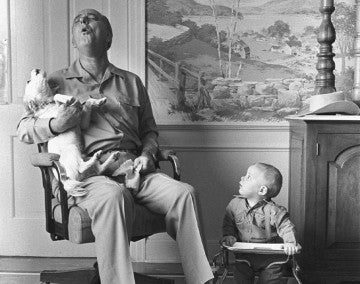
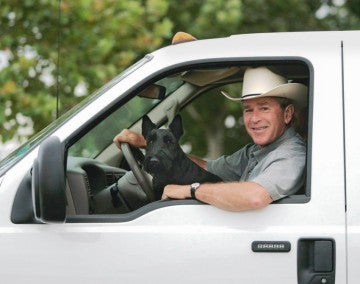
Multipurpose pets
Presidential pets have served a variety of purposes, from the political to the personal.
In 1928, candidate Herbert Hoover was well known for organizing relief efforts during World War I and for serving as the U.S. commerce secretary, “but he had a reputation for being a little stiff. People didn’t know much about his personal life,” Hager says. His campaign sought to rectify this by distributing photos of a smiling Hoover with his Belgian shepherd, King Tut. Candidate Hoover became President Hoover. Hager notes, “That’s probably the first example we have in presidential politics of someone using an animal specifically during an election to garner votes.”
Franklin Roosevelt needled his critics with Fala, his lively, near-constant companion.
During the 1944 campaign, a rumor surfaced that Roosevelt had accidentally left Fala behind on the Aleutian Islands and had sent a U.S. Navy destroyer to retrieve him at great taxpayer expense. Roosevelt responded with what came to be known as the “Fala speech.”
He told a labor organization that Republican leaders, no longer content with attacking him and his family, “now include my little dog, Fala.”
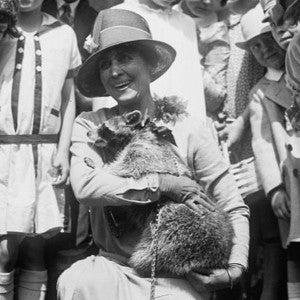
Rebecca was a raccoon-about-town during the Coolidge administration, walking on a leash and attending social events with first lady Grace Coolidge.
National Photo Company Collection
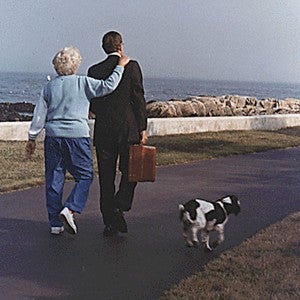
“Even on my most difficult and challenging days as President, Ranger and Millie brought great joy to my life. There is nothing like the unconditional love of a dog to help you get through the rough spots.” —George H.W. Bush
David Valdez

While he never actually held a press conference, Socks the cat accumulated an army of fans during the Clinton administration.
Marcy Nighswander/AP Images
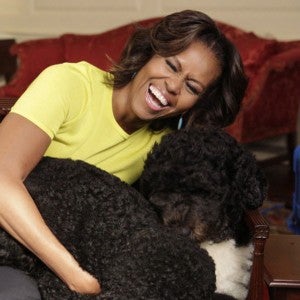
“Bo is the most famous member of the Obama family.” —First lady Michelle Obama
Amanda Lucidon
Want more content like this?
This was written and produced by the team behind All Animals, our award-winning magazine. Each issue is packed with inspiring stories about how we are changing the world for animals together.
Learn MoreSubscribe
